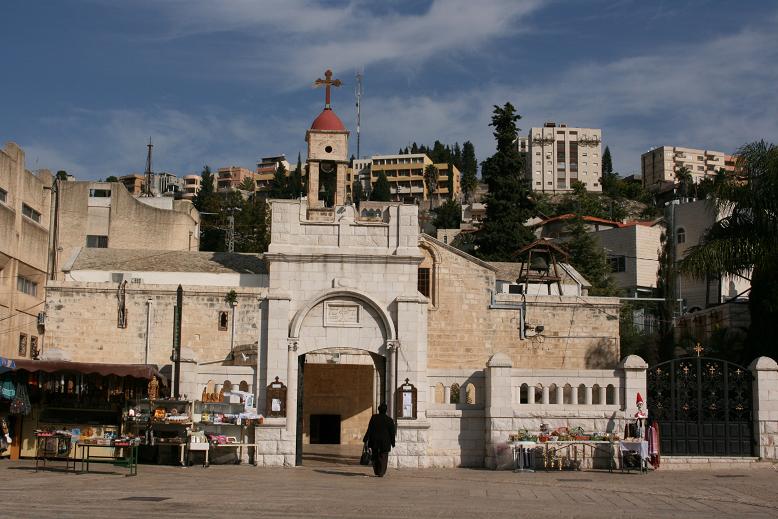Check out our shop where you can purchase tours! Learn More
The church is located close to the spring of Nazareth and is a 10-minute walk from the Catholic Church of the Annunciation. Knees and shoulders must be covered.
Opening hours: 7:00–17:00 (every day but Sunday)
The church has three names, each of which gives us a different piece of information about it. Gabriel is the angel who told Mary that she was carrying the son of God. In the church, a spring flows, giving it the name Mary’s Well Church (the water flows underground from the church to a well 140 meters away from the church). Its main name, Orthodox Church of Annunciation, comes from a tradition that is not mentioned in the New Testament. The New Testament is a collection of books that came to be Christian biblical canon.
There are dozens of gospels that didn’t end up in the canon. One of them is the Gospel of James (also known as the Protoevangelium of James), which had a great influence on the Orthodox Church. James, according to tradition, was the brother of Jesus from the first marriage of Joseph. He was the leader of Jerusalem’s community of the followers of Jesus, and therefore is considered to be the first bishop of Jerusalem. In the Gospel of James, it is relayed that the angel Gabriel blessed Mary at the well, but she was frightened and ran home. Here he announced that she was carrying the son of God. And so, at the spot where Gabriel meets Mary, there stands the Orthodox church, and at spot of her house stands the Catholic church.

The modern church was built in 1750 by the Orthodox community over the ruins of a 12th century Crusader church that had been destroyed by the Mamluks. The two Annunciation churches look very different from one another. There are some elements that distinguish the churches. In Orthodox churches there are no statues, but many icons that are painted on the walls. The icons are two dimensional drawings. Another difference is that in Catholic churches, the altar is visible, whereas in the Orthodox churches, the sacred area around the altar is hidden behind an iconostasis – a wall with icons.
+ Discount Codes
…or as a PDF
©2024 Traveling Israel. All rights reserved. | SITEMAP | TERMS & CONDITIONS